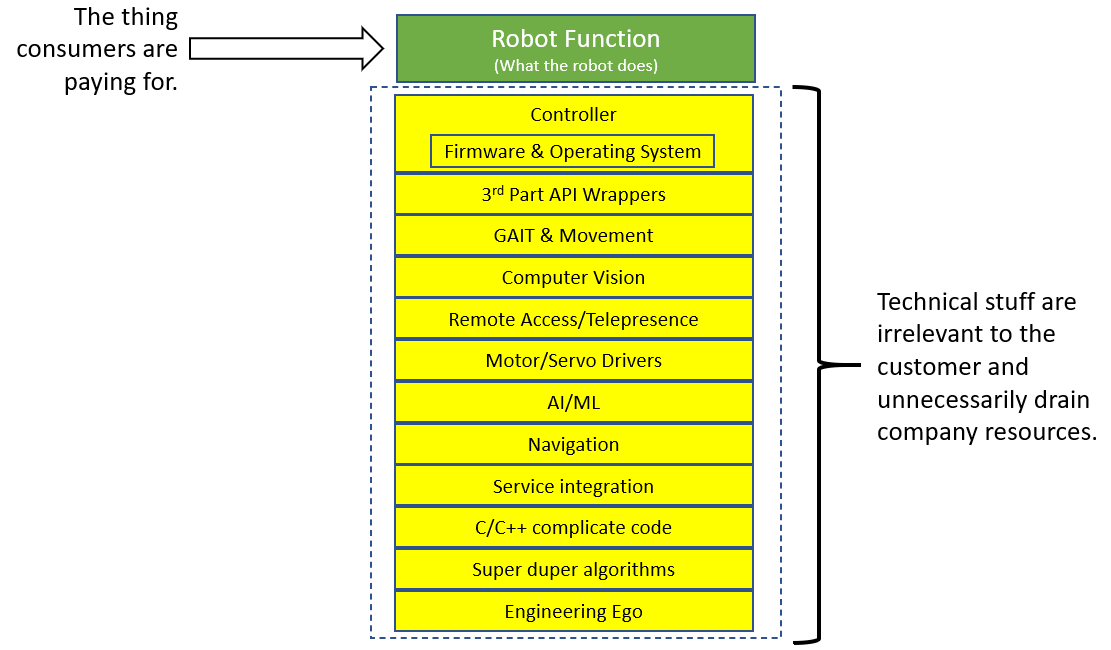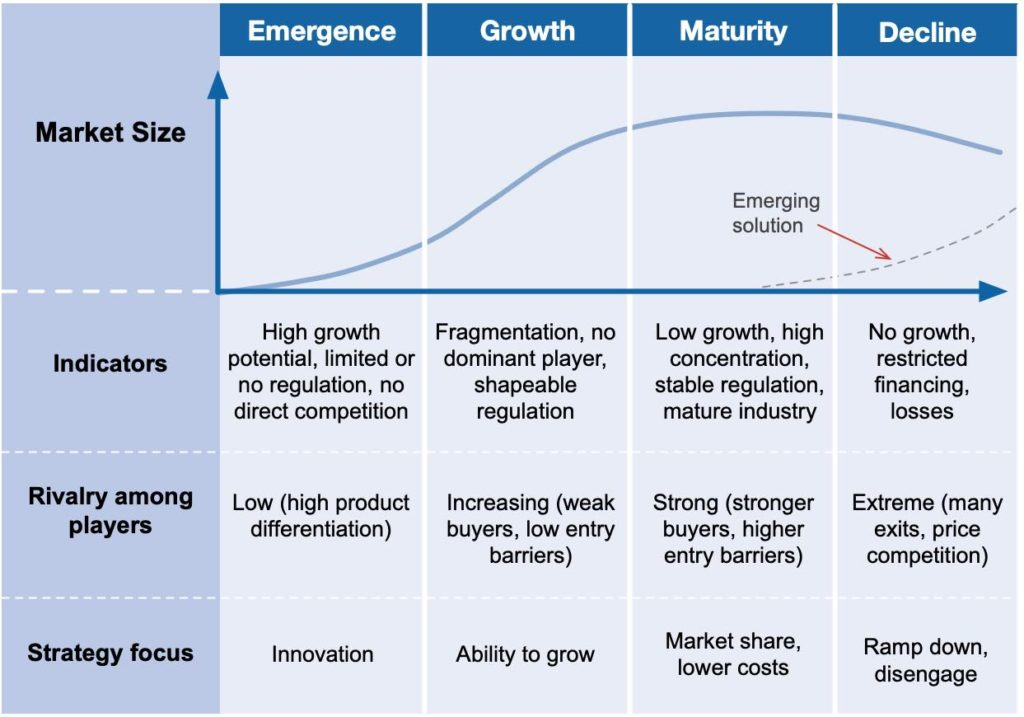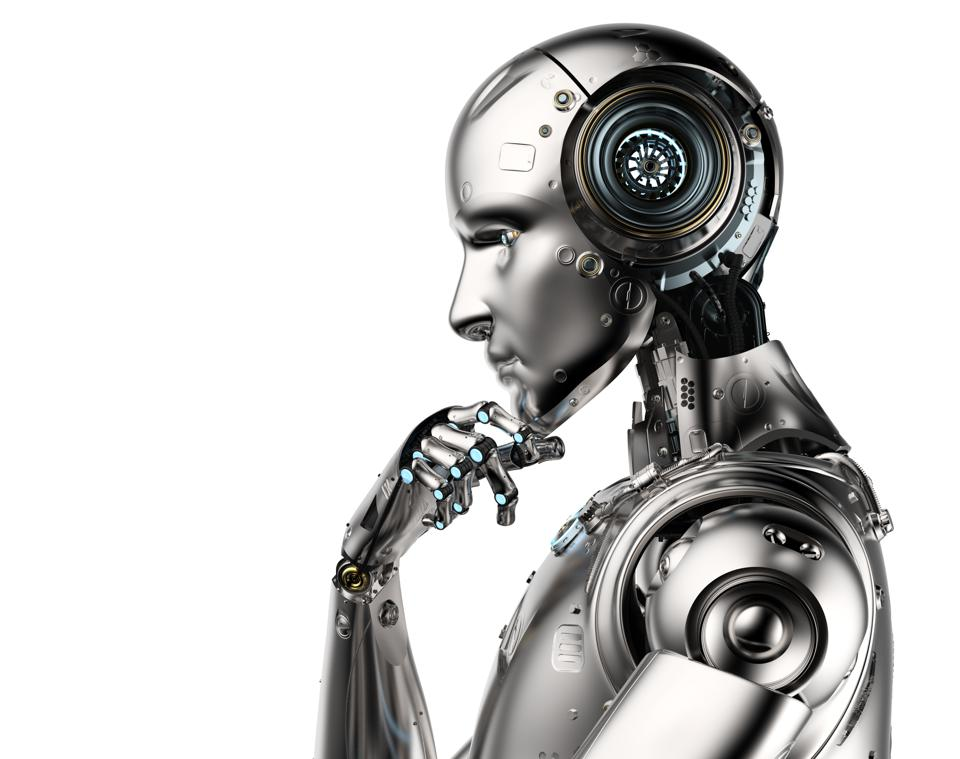
RIP: Anki, Jibo, Baxter, Mayfield, etc...
History foretells the fate of robot companies that attempt the burden of building and sustaining "the full-stack." Similar outcomes have affected companies from all industries where the founding partners were engineers. Today, we begin to ponder the question of where are the robots? Most importantly, why have so many robot companies failed, and what can we do to help robot companies succeed?

Perhaps the noise from social media, politics, and the current Covid-19 situation has caused startups and the investment community to forget a vital part of the industry life cycle stages. Organizations might have also overlooked this because it has also been several years since a new industry has emerged. Even the last few personal-computer sub-industries of mobile devices/apps, VR/AR, etc., have inherited sectors from existing mature and proven industries.

Robotics is a unique industry, albeit not too different from the personal-computer evolution, where multiple disciplines united to form a consumer product. The Personal Computer took many decades to influence and support sub-industries of software, hardware peripherals, and a wide range of use cases. Today, a computing device is user-friendly and esthetically pleasing, and the complex engineering disciplines are well hidden (CPU, operating system, drivers, power management, etc.). Readers may recall early personal-computer diagrams that included input, output, processing, and storage devices. Even earlier than the 1980's personal-computer, a computer consisted of even more complicated engineering disciplines that seemed impossible to scale to what we have today. Today, a computing device is common-place, and the components that make up computing devices are not taught in school as they once were.
The Revolution of Robot Platforms
Today, a child can operate a computing device before knowing how to speak. This results from a mature industry in which every contributor plays their strength by focusing on what they do best when contributing to product development. For example, some profitable companies make integrated circuits with a single function of performing mathematical floating-point calculations incredibly fast; because that is their strength. Another company will manufacturer a button or connector because that is their strength. Again, another produces batteries because it is their strength. The distribution of these disciplines in computing is how organizations can build platforms like Unity, Android, and Wix. Creative entrepreneurs use these platforms to make products that seamlessly integrate with our lives as tools and entertainment. What will it take for the robotics industry to distribute disciplines across specialists and enable creative entrepreneurs to make robot products rather than engineers? Imagine the impact that robot products made by creative entrepreneurs would have on our lives!
So, Where Is My Robot?
 This is the first blog entry in a series titled "Where Is My Robot?". We will cover the robot industry failures, strengths, and areas of improvement needed to fulfill consumer and financial potential. We will reflect on the fallen venture-backed giants that attempted to skip the industry life-cycle steps, such as Baxter, Anki, Jibo, Mayfield, Romo, and many others.
This is the first blog entry in a series titled "Where Is My Robot?". We will cover the robot industry failures, strengths, and areas of improvement needed to fulfill consumer and financial potential. We will reflect on the fallen venture-backed giants that attempted to skip the industry life-cycle steps, such as Baxter, Anki, Jibo, Mayfield, Romo, and many others.
We will examine organizations that repeat Synthiam's message that "too many robot companies focus on the robot and not the business"; however, these same organizations build complex solutions targeted at engineers instead of creative entrepreneurs. In this article by TechCrunch, hardware manufacturers use Synthiam's message that "making robots should be easy" while contrarily designing products targeted at engineers.
In this "Where Is My Robot?" series, other subjects we will discuss are operating system choices that support rapid prototyping for creative entrepreneurs. Most importantly, how using Linux for r&d increases the barrier of entry, adds unneeded operational complexities, and limits productive creativity.
Provide feedback in the comments of topics in this area you would like to see covered. See you in the next blog entry - stay tuned!

I understand business, (had a national sales force) manufacturing, productivity, employees (with managers) and their temperaments (had almost 100 employees)
Sad to hear that those companies: Baxter, Anki, Jibo, Mayfield, Romo, and many others are out of business now...
Will be interested to see your next post on Where Is My Robot?
EzAng
That’s great to hear, ezang. It’s the consumers and staff that suffer most from robot companies who fail under these circumstances. It’s preventable by building robot products using platforms like Synthiam, rather than starting from scratch and maintaining a huge code base.
There’s a number of companies who are starting to understand - so I foresee a robot platform revolution coming soon!
Oh man, you are so right about the consumers getting the shaft. The infamous cheap wiring problem with every Wow Wee Robosapien V2,the large robot. that is Failing world wide with cheap wires that burn inside or corroded so fast.Most do not work that you try to by second hand on Ebay from this problem. Mark Tilden the Robot designer just made a poor choice in using the cheaper wires in this robot. He now has a bad stigma following him around ,many angry consumers like myself. I tried to buy 3 of them from Ebay,all had the wiring corroding to dust inside, 1 started a fire after putting rechargable stronger lithium batteries in the feet location. Grrrr ,and I remember the first brand new one I bought from the store,it did last 2 years before I sold it,was very cool when brand new. The wires can be replaced but you have only a 50/50 chance that it will be successful,I tried it twice but failed,time consuming process too. Never again.xD
I had a Wow Wee Robosapien V2 robot years ago - with cheap wires, terrible design
Thanks for sharing your experiences with those robots. It’s also unfortunate that we never got to experience many of the other robot companies that went bankrupt.
I've got a robosapien v2 in pieces in the loft and some new wires, just never got around to rewiring it. The story I've heard is that the Chinese supplier of the wiring harness had sourced some cheaper wire to increase their profit and that it wasn't a fault with Wowwee's design. It was the insulation around the cable that disintegrated leaving the bare wires exposed, a shame really as Wowwee made some interesting robots for the time (roboquad, and rs media to name a few) and I believe they are still producing robotic products.
It’s certainly common for toy companies to cut corners on manufacturing. Companies that have promised robot products which barely saw the light of day, such as Baxter and Mayfield are quite interesting to examine. Even UBTech, who raised $1 billion has disappeared. Others are struggling with maintaining the financial burden of both software and hardware. SoftBank’s pepper robot was underwhelming and the execution wasn’t thought out.
Lol, funny enough I have 2 Robosapiens (well one is an RS media) at home that were given to me because of failed wiring. I didn't realize it was such a huge failure point
I wanted to bring up that a few of the companies @DJ mentioned did do some great pioneering. Baxter with co-robots and Jibo with social robots. Even though they failed, they did make progress for us all. I sometimes wonder if it was poor execution or just poor adoption (the world wasn't ready yet). I'm probably leaning toward poor execution because many promises were broken. There was a lack of features and capabilities. Another argument would be that if something were well executed it would likely have had staying power. I'd say that iRobot's Roomba is a good example of that.
As it's been said in the past about pioneering:
"Pioneering is glorious, but later entrants are often the ones who see the true potential of discoveries." - Gerard J. Tellisv